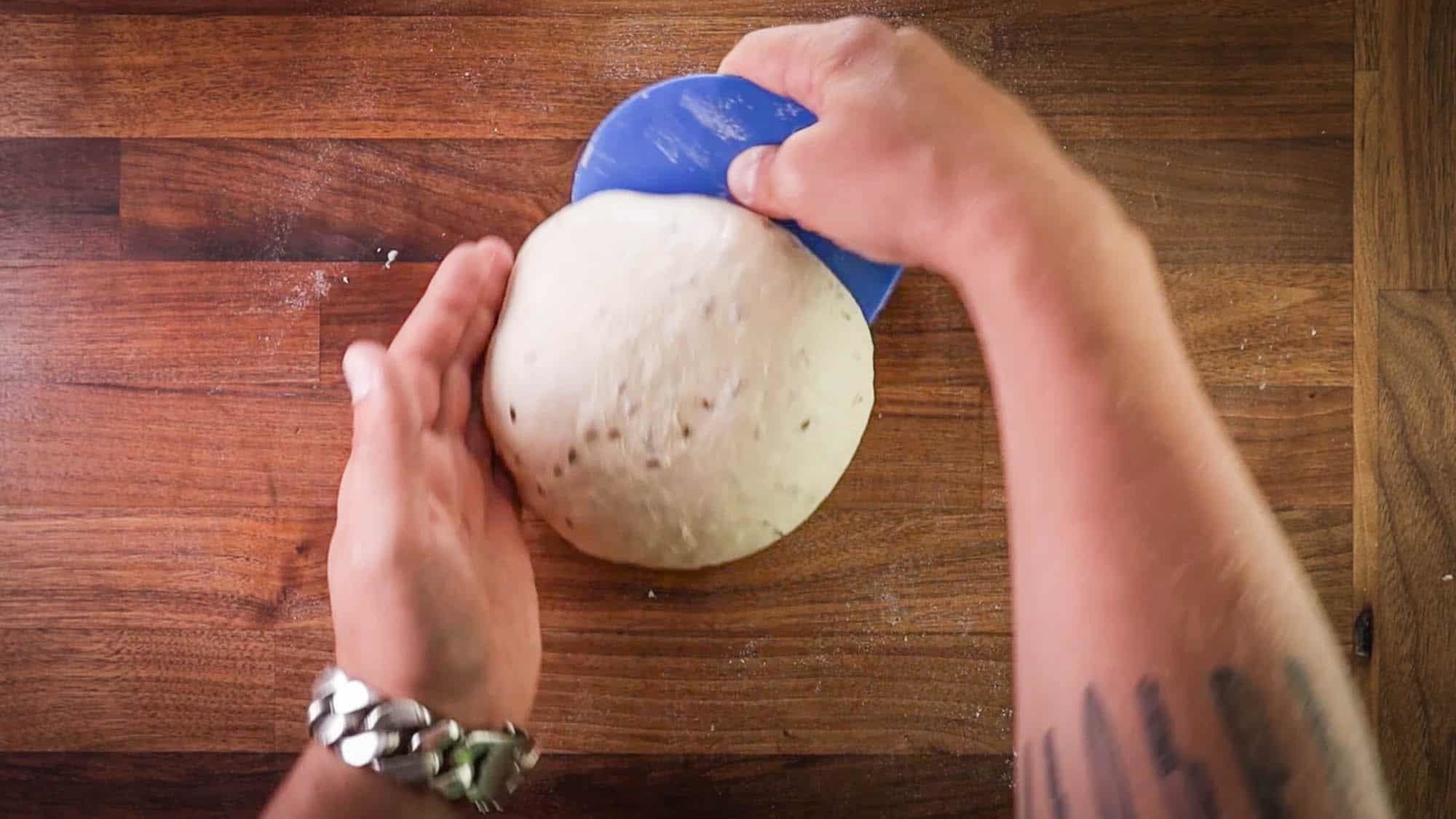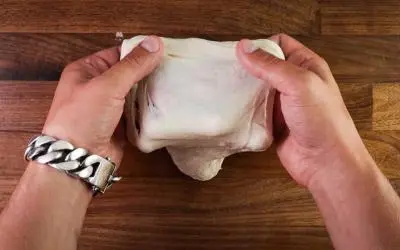After the dividing step comes the preshaping.
Once the dough has been divided it needs to be preshaped to change the random sized pieces into more consistently shaped ones.
Preshaping is there to organise the dough and make the final shaping a lot easier and more effective.
The tightness of the preshape will determine how long the dough will need to be rested before its final shaping. The tighter the dough the longer the rest.
This gives us a great opportunity to control the process.
If your dough is already quite proofed and your risk over proofing, then do a light preshape so that you can do the final shaping sooner and not waste time.
Also, if the dough is quite loose, then a tight preshape will create more strength in the dough and stop it from spreading out.
Most of the time dough would be preshaped into round pieces. But for some breads it is advantageous to preshape the dough into a shape that is like the final product.
Baguettes or breads that are made of dough that is oblong would be better to preshape into long pieces like cylinders. Bagels and strands for braided loaves would benefit from this too.
There are times that the preshaping step would be skipped. If you are only making one loaf of bread and it does not require extra folds, then it can be shaped into its final shape straight after bulk fermentation.
When making breads like ciabatta, focaccia, fougasse the preshaping step is skipped as the dough is shaped at the point of dividing it.
Watch the video here



